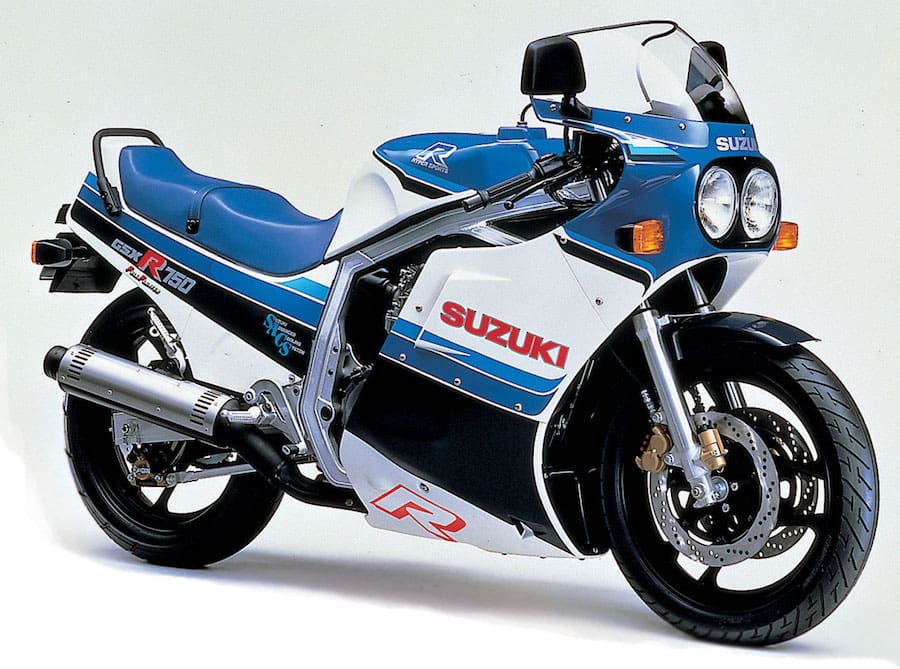Rarely is a jumble of letters and numbers as evocative as the combination of G, S, X and R when combined with 750. Now fans of the bike that started the whole modern superbike class can start celebrating as we get word there’s a new GSX-R750 in the works.
While sales of Suzuki’s genre-defining superbike have long since fallen from its 1980s and 1990s peak, for many the GSX-R750 still hits a sweet spot that others fail to reach.
That 750cc engine is in the Goldilocks zone, not tearing your face off like today’s 1000cc superbikes but offering more power and grunt than any 600. And as the cost of 1000cc superbikes spirals ever higher, the 25 per cent capacity reduction to the GSX-R750 results in at least a similar proportion coming off the list price in most markets.
However, the current bike’s days are numbered due to new regulations in Europe. Suzuki is still flogging 2016-spec GSX-R750s there because there’s no official 2017 model. The same applies to the identical-looking, smaller-engined GSX-R600.
Officially, the 2016 bike shouldn’t even be on sale in Europe. Since 1 January, all new bikes over 125cc need to have ABS brakes and meet Euro 4 emissions rules. They should also meet a host of other requirements included in Europe’s latest type-approval regs.
The GSX-R750 and 600, last revamped for the 2011 model year, don’t comply with the new regs. Instead, Suzuki is relying on ‘derogation’ allowances, which let it sell small numbers of non-compliant, pre-2017 models for up to two years.
Come the end of 2018, if any are left over they’ll have to be re-exported (or, more realistically, registered and sold as used bikes).
Weak GSX-R600 sales mean Suzuki is likely to cancel the model when stocks run out. Honda has already dropped the CBR600RR in Europe and Kawasaki is expected to do the same with the ZX-6R, also currently being sold under derogation rules in 2016-spec.
But Suzuki insiders say the GSX-R750 won’t be allowed to die so easily.
Understandably, the firm has an attachment to the GSX-R750 that’s stronger than almost any other model in its line-up.
The original version, introduced back in 1985, was the first aluminium-framed superbike and as such set a template that virtually all its rivals went on to follow.

While conceived as a race replica, the basis of a homologation racing machine, the GSX-R750 subsequently had the luxury of being able to be a road-only model.
The now iconic Suzuki also has no direct competition, so despite the current version’s age it still sells respectably well.
Combined with the importance of its name, the result is that it has justified its place in Suzuki’s future range.
What?
The next-generation GSX-R750 is expected to retain the existing four-cylinder engine, retuned to meet the latest European emission rules. With no race series to compete in and no direct road-going rivals, Suzuki doesn’t need to increase the bike’s performance, so power will be close to the current 110kW. But expect a full package of the latest Bosch traction control to go along with ABS from the same company.
Suzuki is also likely to retain a similar chassis to the current model, which is no bad thing. Suspension will no doubt be updated and styling will likely reflect that of the latest GSX-R1000 (below).

When?
It’s sure to be available before the start of 2019, but could appear even earlier as a 2018 model. That might depend on Suzuki’s marketing and R&D departments. The firm is also working on a replacement for the current Hayabusa (below) for precisely the same reasons as the GSX-R750 – the current model doesn’t meet Euro4 requirements. But Suzuki isn’t likely to introduce the two models simultaneously, so one will likely appear as a 2018 model-year bike, the other as a 2019 offering. There may well be much less than a year between their actual on-sale dates, with one available in early 2018, the other later the same year.

By Ben Purvis











